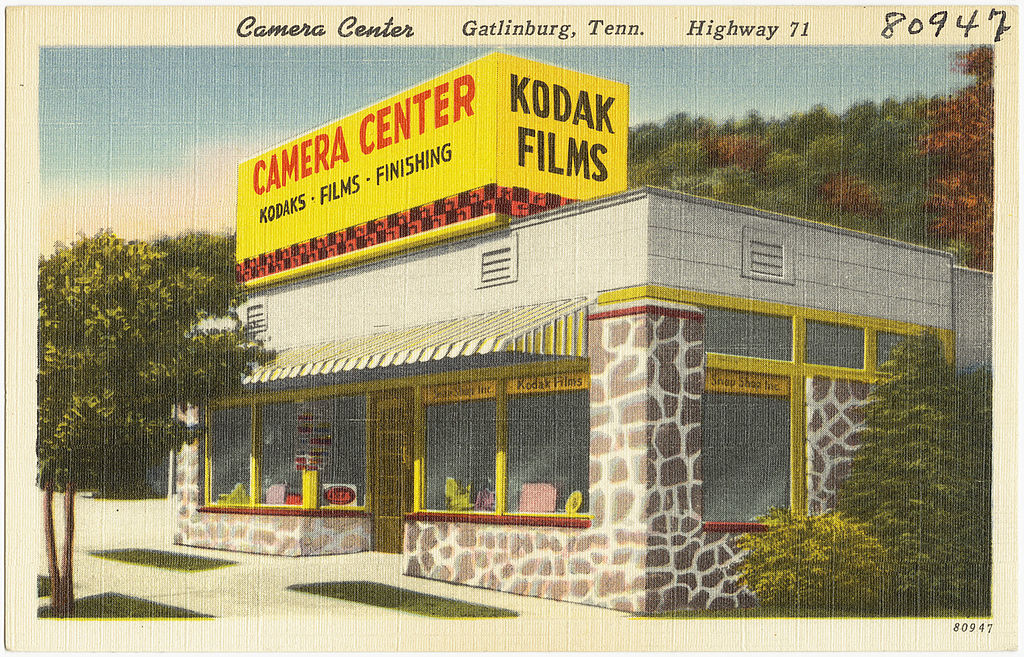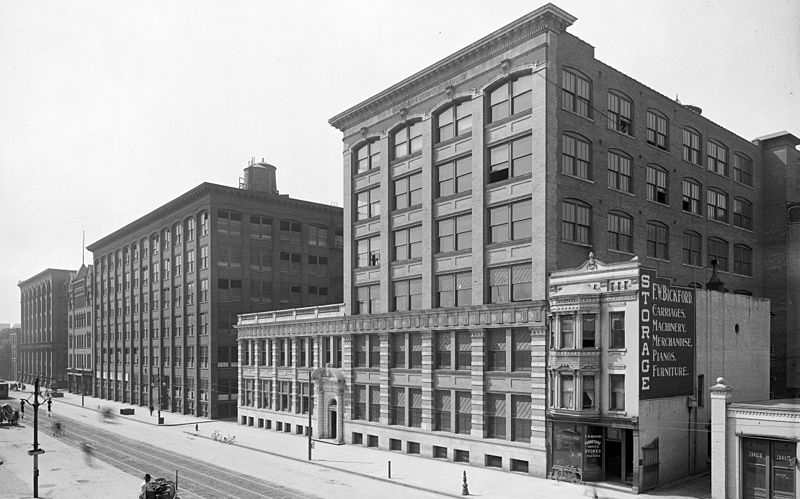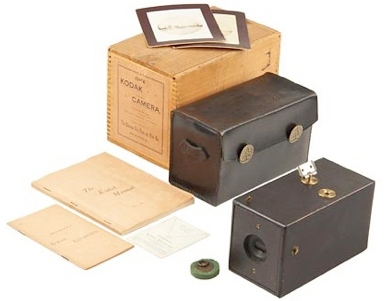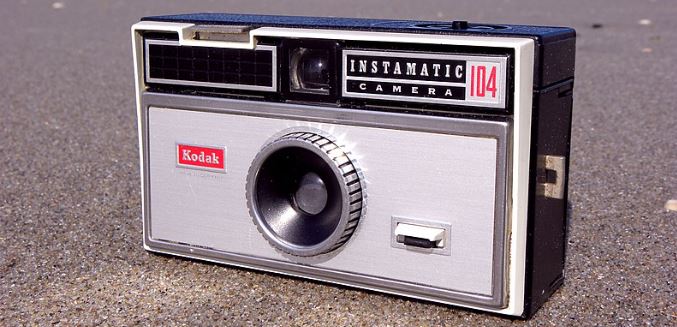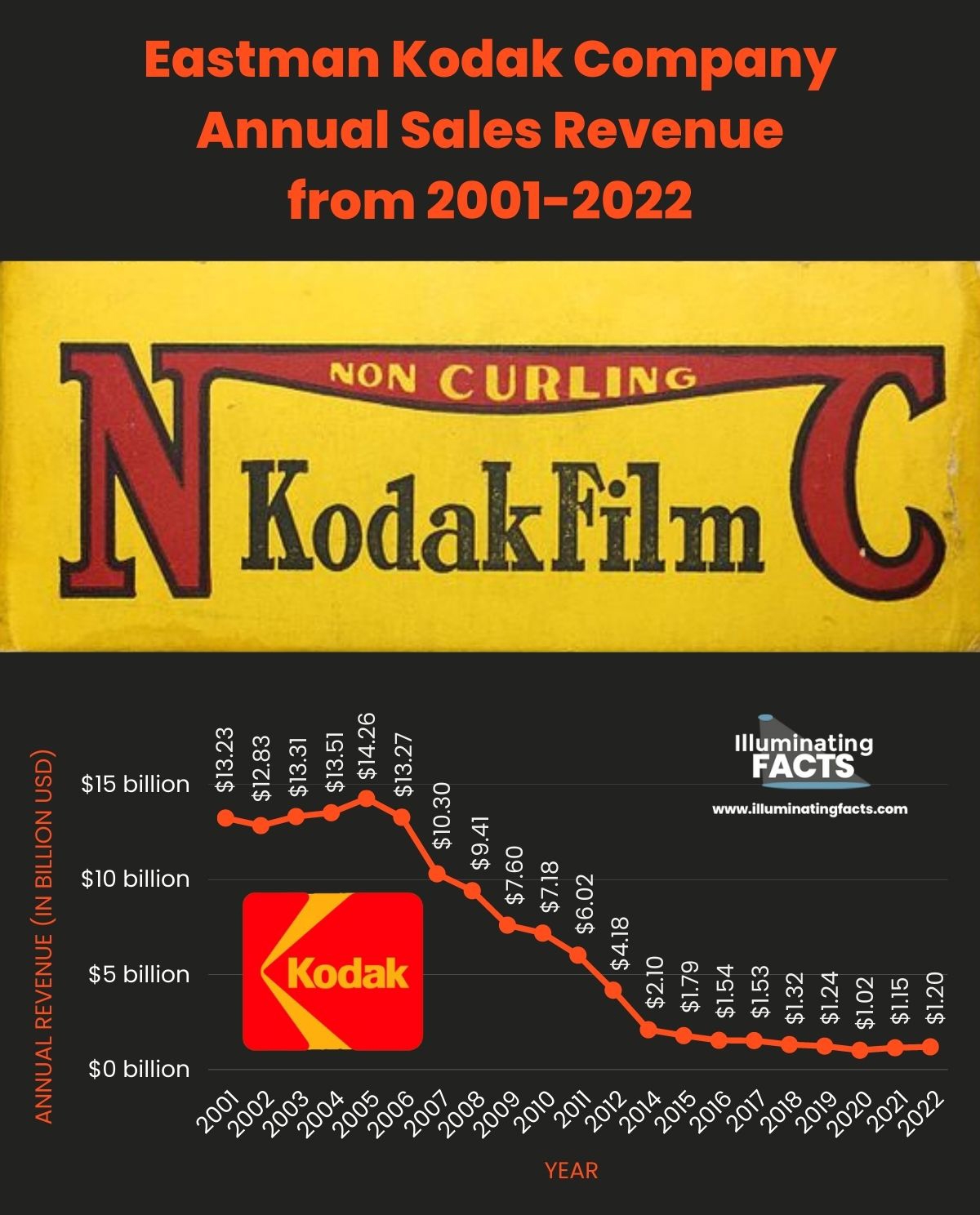In the present society, documenting about one’s life has become easier. People now have their own smartphones. Some even own high-tech cameras that do not just produce quality photographs, but are also lighter and portable. Kodak, as one of the pioneers in the field of photography, paved the way for all of these to happen. Their innovations from making cameras portable and produce colored pictures greatly benefited the society. It became their mission to make photography convenient for the general public and improve how people appreciate the impact of images in their lives.
Kodak, during its heyday, did not just introduce the film camera; it also paved the way for the rise of a new mass market. People before Kodak highly relied on professional photographers with heavy and large-sized cameras and glass plates to capture moments for them. Therefore, after it was founded, they had to teach people the basics of photography and educate them on why they needed to do so before they were able to establish their name in the industry.
However, Kodak, despite having successfully impacted and improved the way people then see things in life, failed to improve itself. Contrary to what they had instilled in millions of their customers, Kodak was not into embracing innovation, leading to the end of its century-long reign as the world’s camera giant. Continue reading to know more about what made Kodak rise and fall in the past century.
Meet Kodak: The Once World’s Camera Giant
Commonly known as Kodak, the Eastman Kodak Company was a well-known American photography company that provides photograph and film services of the public. George Eastman founded the company in 1880 with the intention of making photography convenient for the rest of the world.
The word Kodak was a trademark and an original creation of Eastman himself with the help of his researchers. They planned to develop a word that does not translate in any language and bear the initial letter K. Eastman admitted to having the letter K as his favorite because of its seemingly strong and incisive appeal. He also intended for the word to be short and catchy for people to remember easily. [2] Hence, the birth of the name Kodak.
Kodak, in its earlier years, translated its innovative ideas into services and devices in the photography market, such as image sensors and scanners. [3] Embodying the slogan, “you press the button, we do the rest,” Eastman changed the once laborious and complicated process of doing photography into something easy and accessible to everyone. [1] His innovative idea transformed what was complicated for the rest of the world to understand into an activity that everyone could enjoy.
Capturing Kodak Moments: A Complete Timeline of Events
The Becoming of a World Leader in Imaging
Unlike others whose passion for a certain craft led them to build their own company, George Eastman did not immediately develop an interest in photography. He spent his earlier years in life as the breadwinner of the Eastman Family. At the age of 14, he already started seeking employment at different insurance firms, where he earned $3 a week. The following year, he worked at another insurance firm as an office boy. Five years later, in 1874, he landed a junior clerk position at the Rochester Savings Bank. [1]
After a few years of working, Eastman made plans to have a vacation in Santo Domingo. One of his coworkers advised him to record his adventures; therefore, he bought photographic equipment and related items. Only then was he able to have his first stint dealing with photography. [1]
Not only was the learning process so laborious and expensive, but the materials and equipment needed to take a picture properly were too heavy and bulky to handle. The camera then was as heavy as a modern day microwave oven that it needed a heavy tripod to be set in position. There was also a need to bring a tent with him so that he could have an area where he could spread photographic emulsions on glass plates before putting them into exposure. Furthermore, he also needed to bring more chemicals, glass tanks, a jug of water, and a heavy plate holder.
Sadly, despite these preparations, the trip to Santo Domingo did not take place. However, it did become the start of Eastman’s passion for making photography easier for everybody.
Dry Plates for Sale: The Emergence of Kodak’s First Product Offering
Having understood the difficulty of the processes that entailed doing photography, most especially the use of wet plates, Eastman sought more information for improvement. He read in an article in British Magazine that British photographers were formulating their own gelatin emulsions. Unlike the ones he used wherein he needed to develop the exposed plates before they dried out, using the gelatin emulsions to coat their plates first maintained the sensitivity of the plate even after they dried, thereby allowing the photographer to develop it at his own leisure.
His discovery of the process used by British photographers inspired him to do his own. After three years of spending his days working in the bank and his nights making his experiments, Eastman perfected a formula that worked. By 1880, he was not just able to create a formulation replicating the initial dry plate techniques but also patented a machine that would allow him and other people to prepare a large number of dry plates at the same time.
In the same year, Eastman leased space on the third floor of an apartment in New York to have his area where he manufactured and sold dry plates. Through his profit, he was able to buy a second-hand dry-plate motor engine for about $125. This upgrade in his equipment allowed him to double his profit which meant success. The flourishing of his starting business attracted the attention of a family friend and American Businessman Henry A. Strong—a start to their business partnership called the Eastman Dry Plate Company in 1881, where Strong served as the president. [1]
Eastman wanted to exert all his effort and attention to their growing business venture; therefore, after a few months, he resigned from the bank. While actively handling the firm’s transactions, Eastman continued researching his way through making photography simpler than before.
For the Eastman-Strong partnership, successes in the field of dry plate manufacturing were lined up. Just three years after the launching of their first corporation, they, together with their 14 shareholders, were able to remake what was once known as the Eastman Dry-Plate Company into Eastman Dry Plate and Film Company. [4] In the same year, they introduced their first product, the Eastman Negative paper, to the public. A year later, in 1885, photo film, the first transparent photographic film was released in the market.
It was only in 1888 when Eastman and his researchers created and gave their own meaning to the name unique name – Kodak. Upon creation, they registered the name as a trademark and use it as the name of the company’s first ever camera–the Kodak camera. This innovation gave rise to snapshot photography. The camera was unlike the bulky ones that photographers, as well as Eastman, have purchased before. It was light and portable. What made the Kodak camera even more special was the pre-installed film that allowed users to take 100 still shots and later on have it developed by the company for a cheap price.
Since the camera was the company’s first product release, strategies were employed to sell a high volume of orders and ensure high profit. They have decided to sell the camera and develop customers’ pictures for a lower price. Although a big risk to take, their strategy worked. The low prices of their products encouraged many people to own a camera and start taking photos. This resulted in a huge amount of sales and profit—which is a win-win situation for all. [5]
Not long after their success in their first launching of the Kodak camera, the company had again employed another strategy. They included the price of developing the picture to the price of the camera, making it seem that the developing process was offered for free. This move did not just further increase the profit of the company, but it also widened and strengthened the Kodak ecosystem because the company was the only place offering photo-developing services.
In 1889, the first commercial transparent roll film was introduced. This creation paved the way for Thomas Edison’s development of a motion camera a few years later and became a standard quality for film.
In the same year, a new corporation, The Eastman Company, was established, taking over the assets of the Eastman Dry Plate and Film Company. [6]
Two years after, innovations continued to bombard the public as the company released its first daylight-loading camera, wherein it enabled the user to load photos despite not being in a dark room.
From Dry Plate to Film: Kodak’s business ventures as Eastman Kodak Company
In 1892, George Eastman reorganized The Eastman Company into the now known Eastman Kodak Company. One of its first products was the pocket camera, famously known as Kodak Pocket, in 1895. The camera had a roll film and a reflected viewfinder that initially showed a circular image of the subject being photographed.
The following year was dedicated to a celebration as Kodak manufactured its 100,000th camera—proof of its continued success in the field of photography. Additionally, in the same year, they also went beyond making cameras intended for snapshots and ventured into producing films used in motion pictures. Moreover, they started to manufacture film used in X-ray machines.
Eastman did not just care about his innovations; he also cared about the people behind Kodak’s early successes. In 1899, he initiated a form of profit-sharing in the company. This meant that workers were given bonuses in accordance with the performance of the company—a practice that his successors continued.
In 1900, the company intended to widen its consumer market by launching the Brownie Camera, also known as the $1 camera. The camera brought photography much closer to everyone’s financial reach as its cost was relatively cheap. The film roll that came with it was also sold for 15 cents each.
Kodak did not just want their products to satisfy a limited American audience. Therefore, in the same year, they established distribution points in Europe, specifically France, Italy, and Germany. [7] In 1902, it released the Kodak developing machine, which photographers could use in order to process roll film without needing a dark room.
A year later, the company expanded to countries worldwide and employed 5,000 individuals to bring the mission of Kodak to their respective countries.
Despite having created numerous inventions in the past several years, Kodak was still able to introduce something new in the market. The company did not just want to make photography accessible for everyone but also safer for professional photographers, most especially when processing films.
In 1908, the company created the “safety film,” a commercially practical and safe film to use by photographers. It was made using a cellulose acetate base instead of the highly flammable cellulose nitrate base making the film processing much safer. [4]
Five years later, it introduced Eastman Portrait Film to the market, which allowed photographers to use sheet film instead of the common and traditional glass plates. The lightness and portability of sheet films made it easier for photographers to process photos.
As innovations continued to pile up, legal issues also started to come. The first legal battle was within Eastman and New Jersey Minister Hannibal Goodwin. Goodwin was also an amateur photographer who made use of magic lantern slides in illustrating his Biblical teachings. His interest in chemistry allowed him to perfect the formula in creating a transparent, flexible film or what was known as celluloid roll film. He was said to have already filed a patent for the said film before Eastman did. This complication resulted in a long legal battle which ended in 1914 with Kodak paying a $5 million settlement fee. [8]
The following year, a federal judge released a ruling referring to Kodak as an illegal monopoly due to its massive reach. The diversity in the company’s service offerings allowed them to dominate the photography industry; therefore, Kodak challenged the court’s decision.
Moving on, in 1917, during the peak of World War I, the company developed aerial cameras in an effort to contribute to the US’s war efforts. They trained US Signal Corps on the usage of aerial cameras. They also became a supplier of cellulose acetate, film product, and indestructible lenses for gas masks for the US Navy.
After the war, Eastman took over the company president position after Strong’s death in 1919.
It was in 1921, six years after Kodak was tagged as an illegal monopoly, when the company decided to let go of some of its plants that manufactured products that were not important to its core offering. This act was an attempt to appease the federal judge.
Two years later, in 1923, Kodak intended to make film-making easier by releasing the 6mm reversal film on cellulose acetate (safety) base, the first 16mm CINE-KODAK Motion Picture Camera; equipment intended to be used for home movie making; and the KODASCOPE Projector.
In 1927, the company became a virtual monopoly in the photography industry and the field of home movies, as it employed another 20 000 employees worldwide. It also remained one of America’s largest companies in the said field.
In the following years, new inventions started to rise in the market. In 1928, the 16 mm KODACOLOR Film was released. It brought the experience of watching amateur movies to another level as it introduced colors in the film. In 1929, the first motion picture film for sound was made available. Four years later, the company released the first 8 mm amateur motion-picture film, an upgrade to the then 6mm version; cameras; and projectors. [4]
Eastman Without Eastman: Kodak’s Resilience Amidst George Eastman’s Death
George Eastman, age 77, died after committing suicide in 1932. He left a note which said, “my work is done. Why wait?” Indeed, throughout his life, he brought innovation accessible to the general public, especially the act of photography. William Stuber, a portrait photographer and former foreman in Kodak’s transparency plate department, took over Eastman’s position as the new president. [9]
Three years later, Kodak released the Kodachrome film, the world’s first color film and one of Kodak’s most popular products in history. [6] During this time, William Stuber had already ended his term as president. He was replaced by Frank W. Lovejoy, Kodak’s former plant manager. Lovejoy lasted only seven years, ending his term in 1941. The position was then given to Thomas Hargrave, former head of Kodak’s legal department.
In 1946, Kodak Ektachrome Transparency Sheet Film, Kodak’s first color film, was released. It was equipped with chemical kits allowing photographers to process the film themselves. [10] Meanwhile, in 1948, the company replicated its efforts in making the safety film again, but this time, it was for the film used in movies.
As years passed by, innovations by Kodak got even bigger. In 1950, it unveiled an 18 feet high and 60 feet wide picture in Grand Central Station, New York. This humongous creation was known as the first Kodak Colorama Display transparency.
Three years later, to give honor and recognition to the lifelong contributions of George Eastman in the industry of photography, his home was opened to the public and was known as the George Eastman House, International Museum of Photography and Film. The museum became one of the world’s greatest film archives up to this date. [10] Furthermore, recognitions continued to come Kodak’s way as it won its first Academy award in 1950 for its creation of triacetate safety-base movie film. [10]
After two years, another management change took place as Albert K. Chapman became the new president. He was the former vice-president, general manager, and productions manager of Kodak.
In the following year, 1953, Kodak founded the Eastman Chemical Products Company to produce and supply their chemicals, plastics, and fiber needs. It was also a strategy for them to combine the cost of film processing with the price of the film itself; however, due to a court order released in 1954 prohibiting this kind of business practice, they were forced to step back from these efforts.
Despite this, the company remained unfazed. Due to the recent establishment of the Eastman Chemical Products Company, Kodak was able to serve independent photofinishers as their new market.
This event was followed by the introduction of some of Kodak’s new creations. TRI-X Film, a popular high-speed black-and-white film, was released in 1954. Another was the Zoom 8 movie camera, Kodak’s first-ever camera with a zoom lens, in 1959. This was followed by the Kodak Carousel Projector, with a round tray holding 80 slides in 1961.
Furthermore, in 1961, under the management of the new president and CEO William Vaughn, Kodak launched its marketing campaign, “Kodak Moment,” which was a success as people started associating the word Kodak with taking pictures and spending more time with their family. Vaughn was a former president and director of a Kodak subsidiary.
In 1962, Kodak achieved another milestone as it recorded $1 billion in sales. Moreover, the number of its worldwide employees reached a total number of 75, 000. A year later, it introduced another easy-to-use camera with a cartridge loading film, the Instamatic, which later gained $50 million in sales.
In 1966, Kodak recorded $2 billion in sales while its worldwide employees grew to a hundred thousand—a significant improvement from 1962’s. Following this success was another honor for the company as Kodak’s camera and film technology was brought along by Neil Armstrong and Buzz Aldrin in their mission of setting foot on the moon.
In 1969, Louis K. Eilers, a Kodak employee who had worked his way up since 1934, replaced Vaughn as the president and CEO. [12]
In 1972, the company introduced a pocket version of the famous Instamatic camera. In the same year, Kodak surpassed $3 billion in sales, signifying its reign as the leader in world imaging.
In 1973, amateurs in the field were the target market of Kodak as they released two super 8 sound movie cameras and cartridge-loading super 8 film, magnetically striped for sound recording. This would allow them to make better home movies. The worldwide employment during this year also increased to 120, 000. Two years later, Kodak went digital as it introduced the world’s first camera. It was a prototype, the size of a toaster, that captured black-and-white images at 0.1 megapixels. It was created by Steve Sasson, a Kodak engineer using the first charge-coupled device (CCD) image sensor with a resolution of 0.1 megapixels.
In 1976, after consistently upholding its mission of making photography an activity everyone can enjoy, Kodak finally reached its market peak. It commanded 90% of film sales and 85% of camera sales respectively, in the USA alone. [4] This was under the management of Robert Moyer and Gerald B. Zornow as president and CEO, respectively.
Kodak versus Polaroid and Fuji: Kodak’s Fight for Greatness
It was also in 1976 when Kodak launched Kodamatic, an instant picture camera and a rival to Polaroid. Not long after their release to the market, Polaroid filed a patent-infringement suit against the photography giant.
In 1977, Walter A. Fallon, former US and Canadian Photographic Division director, became President and CEO. With him was Gerald B. Zornow, who served as the chairman. However, when Zornow retired, Fallon assumed the position of chairman while Colby Chandler succeeded in the latter’s former position as president and CEO.
Despite the legal problems and the series of management changes, Kodak continued to innovate. The company released its Colorburst 100 instant camera in 1978. During the same year, Steve Sasson and Gareth Lloyd, Kodak engineers, received the patent for their 1975 invention and launching of the first digital camera. Three years later, just a year late from the company’s 100th founding anniversary, Kodak surpassed the $10 billion in sales mark.
Instead of celebrating, Kodak was being challenged by the slow but steady growth of another frontrunner in the field of photography, Fuji. The latter offered 35 mm cameras at lower prices. Also, Fuji managed to be successful at its take in entering the video market—something Kodak failed to do since its initial entry was not suited to the interest of the public and was not compatible with the then popular VHS format. This resulted in a significant decrease in profit during the same year.
Furthermore, the presence of a fierce competitor did not sit well with the company. Due to the pressure, Kodak had no choice but to cut off 5% of its workforce.
In 1984, Kodak moved forward and once again tried its luck in the video market. It launched Kodavision Series 2000 8mm video system together with the 8mm Kodak videotape cassettes, as well as Beta and VHS formats and floppy disks for computer use. Although successful, the company was threatened once again as it lost the title of “Official Film of the 1984 Summer Olympics” to Fuji which further hinted at its declining status.
To recover from all of these, in 1985, the company went through another reorganization to focus more on growth opportunities.
It was in 1986 when the court issued a ruling that ordered Kodak to stop manufacturing instant cameras and pay $1 billion in damages to Polaroid. This meant a huge effect on the financial status of the company. Hence, they laid off 10% of their total number of workers.
In the years that followed, despite all the issues surrounding it, Kodak went all-in with its innovations. In 1989, disposable cameras became the trend. Kodak released the one-time-use KODAK STRETCH 35 Camera produced 3 1/2 x 10 – inch prints for panoramic scenes, and Kodak Weekend 35 Camera. Meanwhile, the KODAK Professional Camera System (DCS) was introduced in 1991, which enabled photojournalists to use a camera equipped with a 1.3-megapixel sensor. During this year, Kodak was able to see the culmination of its legal battle with Polaroid. The court’s final ruling ordered the former to pay a settlement fee of $925 million to the latter.
Although there may have been a few bumps during these years, Kay Whitmore, who started his term as the president and CEO in 1990, managed to direct the company to greener pastures. The profits grew steadily, signifying the effectiveness of the reorganization conducted a few years back.
In 1993, Kodak introduced PhotoCD, a new means of storing photos for users. In the same year, Whitmore’s stint as the top management of Kodak lasted only three years. He was pressured to give up the position due to his lack of effort in solving the company’s problem with earning stagnation.
The company, during these years, had consistently lost its market share. Its products started to lose their value. Adding fuel to the fire was its reluctance to embrace fully digital media due to fear of undermining what they were famously known for—the chemical photography business. However, despite this, they were slow in adapting to the latest trends in chemical photography.
George Fisherman, a total outsider and former president and CEO of Motorola Inc., took over Whitmore’s position. He pledged to refocus Kodak’s attention on product growth and innovation. He wanted to follow what Eastman started, but, this time, digital technology innovations were included.
To cater to the company’s needs in emerging towards the digital world, he created a new division named Digital and Applied Imaging in 1994. He hired the services of Carl Gustin, a former marketing executive of Digital Equipment Corporation and Apple Computer Inc., to guide the company as it took another new venture.
The division’s first project was the relaunching of PhotoCD in a revamped exterior design aimed to be used with desktop personal computers.
In 1995, another distribution center was opened in Moscow, Russia, that houses and sells products manufactured from plants in the United Kingdom, France, and Germany.
The following year, Kodak approved a budget worth $100 million to fund its television, radio, outdoor, and print campaign for one of Kodak’s newest products in the market Ektachrome Elite II.
By the end of 1996, the company still was a giant compared to other photography companies as it governed two-thirds of the global market share and gained a total of $16 billion in revenue. The company’s net worth also sky-rocketed and amounted to $31 billion. Kodak, during this time, was among the top 5 most valuable brands worldwide.
This year, Kodak presented Daniel Carp, a former statistic analyst, as the company’s new president and chief operating officer.
Eastman Kodak Company Annual Sales Revenue from 2001-2022 [13]
| Year | Annual Revenue (in billion) |
| 2022 | $1.20 |
| 2021 | $1.15 |
| 2020 | $1.02 |
| 2019 | $1.24 |
| 2018 | $1.32 |
| 2017 | $1.53 |
| 2016 | $1.54 |
| 2015 | $1.79 |
| 2014 | $2.10 |
| 2012 | $4.18 |
| 2011 | $6.02 |
| 2010 | $7.18 |
| 2009 | $7.60 |
| 2008 | $9.41 |
| 2007 | $10.30 |
| 2006 | $13.27 |
| 2005 | $14.26 |
| 2004 | $13.51 |
| 2003 | $13.31 |
| 2002 | $12.83 |
| 2001 | $13.23 |
Source: https://companiesmarketcap.com/eastman-kodak-company/revenue/
Kodak: The Tragic Fall
After more than a century of its reign as the world’s leader in imaging, Kodak’s sales started to diminish.
In 1997, just a year after the record-breaking $16 billion revenue, Kodak’s worldwide sales decreased to only $14.5 billion. Deducting the costs of restructuring and asset impairments from this amount left the company with only $130 million in profit.
Despite this, Kodak was able to somehow redeem itself little by little. During the same year, Kodak created the imaging sensors placed in one of Pathfinder’s rovers, Sojourner. The sensors served as the eyes of the rover as it maneuvered on the rocky terrains of the planet Mars.
Although considered a success for the company, Kodak was still on the edge of being defeated by Fuji. The latter company amped up its business tactics by giving rebates and circulating full-page ads in USA Today. They did this during the holiday season, in time for family gatherings where people were more enticed to purchase cameras and photograph events. The company’s efforts paid off as they gained a 12% increase in their net sales.
Kodak’s Shift to Digital
Although both Kodak and Fuji understood the looming threats of digital photography, the latter was better at using diversification as a strategy.
Under Carp’s management, a series of innovations were introduced. In 1998, Kodak Picture Maker, a digital imaging kiosk that consumers could use to edit an existing photograph, was introduced to the market. Easyshare family of digital cameras and printdocks were also key innovations of the company in the following years. By 2005, Kodak became the U.S. number 1 in digital camera sales.
Being at the top was a huge success for Kodak, especially since it dealt with technological advancements. However, it failed to foresee how fast the general public could be in considering digital cameras as a commodity. Not only was Kodak losing in the field of digital technology, but it also fell 18% short of its total profit margin for its film business.
With Antonio Perez as the new CEO, Kodak hoped to regain what it once was. However, the traditional film business dwindled faster than expected. In 2007, it only ranked 4th in U.S. digital camera sales. The rise of mobile phone technology did not help either. People had even more options on how to do photography.
Promotion and marketing campaigns were found to positively affect the brand only for a short amount of time. Kodak underwent a series of revamping and updating of designs and styling, yet the effects were not long-term. In 2009, Kodachrome film rolls, one of the company’s popular and enduring products, were laid to rest.
The impending doom of the world’s camera giant was getting closer, but Perez had a major strategy change. In 2011, Kodak shut down Kodak subsidiary film companies and cut 27, 000 employees from its workforce to better fund the company’s outsourcing activities like investing in digital technology as well as in services that capitalized on technological inventions to improve Kodak’s profits.
Moreover, Perez also addressed the issue of failing film sales by spending hundreds of millions of dollars on developing high-margin printer ink. This strategy might have been Kodak’s remaining hope for redemption as it identified home printers as its new core product in August 2012. However, given how fast-paced technology has been in the past years, the company was forced to stop manufacturing its inkjet products after sales continued to drop in September of the same year.
During these times, Kodak was already on the brink of bankruptcy. It was reported that the company was already in the middle of a negotiation with Citigroup, an American investment banking company, to provide financial help. Kodak finally officially filed the Chapter 11 bankruptcy protection and was loaned $950 million for it to continue its operations. Citigroup also provided eighteen months for the company to submit its reorganization plan before it could be allowed to operate independently again. Analysts also suggested that they auction some of their patents to further alleviate the struggles that Kodak was currently facing.
Kodak’s Comeback from the Great Fall
In April 2013, a few months after the deadline imposed by Citigroup for Kodak to submit its reorganization plan, the latter released its newest innovation, the Micro Four-Thirds Camera, which would be manufactured by the then-newbie in the world of digital imaging, J.K. Imaging.
A few months after, in September of the same year, Kodak officially announced its emergence from bankruptcy as a technological company mainly focusing on imaging products and services.
On March 12, 2014, Jeffrey Clarke was elected the company’s new CEO. Before joining Kodak, Clarke already worked as CEO of different private companies that deal with hardware, software and services, and printing. [14]
In his five years of service with the company, one of his greatest achievements was a project where he worked with several notable film directors, Christopher Nolan, J. J. Abrams, Judd Apatow, and Quentin Tarantino, to save film stock from extinction. [15]
Moreover, in 2015, Kodak introduced a new five business-structure: Print Systems, Enterprise Inkjet Systems, Micro 3D Printing and Packaging, Software and Solutions, and Consumer and Film.
Aside from this, it was also during Clarke’s term when the company announced the manufacturing of Kodak’s very first phone, which was known as the Kodak Ektra smartphone. It was first released in Europe in 2016 and in the U.S. in June 2017. A month later, the company made announcements about its plan to release 7″ and 10″ tablets with Archos, a French multinational electronics company.
How is Kodak fairing now?
From 2019 up to this date, Jim Continenza, a company board member since 2012, has served as Kodak’s executive chairman. Aside from the imaging business, Kodak also ventured into the pharmaceutical business.
The shift was funded by the U.S. International Development Finance Corporation (DFC) in 2020 following former U.S. President Donald Trump’s orders to grant loan agreements to companies that will help mitigate the medicine shortage in the U.S. They were given a $765 million loan under the Defense Production Act. In return, the company will supply active pharmaceutical ingredients that will be used in making generic medicine. [16]
This massive investment resulted in a huge increase in Kodak’s share price—from $2.62 per share to $43.45 at its peak. This would have been a game changer for the company—something that would completely lift it to the top. However, issues began to surround the deal not long after–the DFC and Kodak needed to pause operations in the meantime. [16]
The Securities and Exchange Commission (SEC) needed to investigate if illegal trading transpired within Kodak, within DFC, or within both institutions due to the astronomical increase in Kodak’s share price. However, they found out that no such thing had transpired. Therefore, clearing Kodak’s name. [17]
The company’s success in its new venture might still be uncertain, but it surely provided Kodak a glimmer of hope. Since the core film segment continued to decline over the years, Kodak needed to seek a new undertaking to ensure its longer existence in the world of business.
Conclusion
More than just being resilient, Kodak’s story tells us more about reality. The world constantly changes, and these changes happen so fast. For businesses like Kodak to thrive, they should be open to not just embracing change but might as well be open to it.
Kodak remains an established name in the business industry despite all the years of struggling and falling. Its product offerings might change over a thousand times, but its legacy remains. From being a dry-plates company to being the Eastman Kodak Company, George Eastman’s thirst for innovation will always be a reminder of success to people who know him.
References:
[1] Kodak, n.d. History. Kodak. Available at: https://www.kodak.com/en/company/page/history [Accessed September 20, 2022]
[2] Guardian News and Media Limited, 2011. Kodak? Where did the name come from? Guardian News and Media Limited. Available at: https://www.theguardian.com/notesandqueries/query/0,5753,-18391,00.html [Accessed September 20, 2022]
[3] Ivy Panda, 2021. Kodak’s Strategies in the 1990s and the early 2000s Report (Assessment). Ivy Panda. Available at: https://ivypanda.com/essays/kodaks-strategies-in-the-1990s-and-the-early-2000s/ [Accessed September 20, 2021]
[4] Andrew Hudson, 2012. The Rise & Fall of Kodak. Photo Secrets. Available at: https://www.photosecrets.com/the-rise-and-fall-of-kodak [Accessed September 20, 2021]
[5] Bharath Sivakumar, 2022. History Of Kodak. Feedough. Available at: https://www.feedough.com/history-of-kodak/ [Accessed September 20, 2022]
[6] Kodak, n.d. Chronology of Film. Kodak. Available at: https://www.kodak.com/en/motion/page/chronology-of-film [Accessed September 20, 2022]
[7] Zippia, n.d. Kodak History. Zippia. Available at: https://www.zippia.com/kodak-careers-3701/history/ [Accessed September 20, 2022]
[8] David Wren, 2020. Ulysses Town Talk: Hannibal Goodwin, inventor of film used to make movies, was Ulysses native. Ithaca journal. Available at: https://www.ithacajournal.com/story/news/local/2020/07/04/film-pioneer-hannibal-goodwin-ulysses-native/5354879002/ [Accessed September 23, 2022]
[9] William Stuber, nd. http://www.shoppbs.pbs.org/wgbh/amex/eastman/filmmore/transcript/enhance/williamstuber.html [Accessed September 20, 2022]
[10] Rochester, 2012. Kodak timeline: 1878 – present. Democrat and Chronicle. Available at: https://www.democratandchronicle.com/story/money/2012/01/19/kodak-timeline-1878-present/77384948/ [Accessed September 20, 2022]
[11] Dresden Engle, 1998. George Eastman House International Museum of Photography and Film. Animation World Magazine. Available at: https://www.awn.com/mag/issue2.12/2.12pages/2.12engleeastman.html [Accessed September 20, 2022]
[12] The New York Times, 1984. Louis Eilers, 77, Dies; Ex-President of Kodak. The New York Times. Available at: https://www.nytimes.com/1984/08/22/obituaries/louis-eilers-77-dies-ex-president-of-kodak.html [Accessed September 20, 2022]
[13] Companies Marketcap, n.d. Eastman Kodak Company. Companies Market Corp. Available at: https://companiesmarketcap.com/eastman-kodak-company/revenue/ [Accessed September 20, 2022]
[14] Business Wire, 2014. Jeff Clarke Elected CEO of Kodak. Business Wire. Available at: https://www.businesswire.com/news/home/20140312005708/en/Jeff-Clarke-Elected-CEO-of-Kodak [Accessed September 20, 2022]
[15] Kristy Puchko, 2014. Quentin Tarantino, Christopher Nolan, And J.J. Abrams Are Saving Kodak Film From Extinction. Insider. Available at: https://www.businessinsider.com/directors-save-kodak-film-from-extinction-2014-7 [Accessed September 20, 2022]
[16] Kyle Blankenship, 2020. Camera maker Kodak dives into drug manufacturing with $765M federal loan. Fierce Pharma. Available at: https://www.fiercepharma.com/manufacturing/camera-maker-kodak-dives-into-drug-manufacturing-765m-federal-loan [Accessed September 20, 2022]
[17] Keith Noonan, 2021. Why Kodak Stock Skyrocketed 75% in 2020. The Motley Fool. Available at: https://www.fool.com/investing/2021/01/04/why-kodak-stock-skyrocketed-75-in-2020/ [Accessed September 20, 2022]


